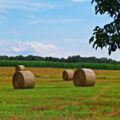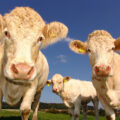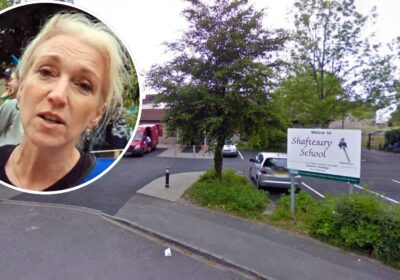The sheep’s feet have remained our main concern over the last fortnight, with Disney Princess still making a good job of limping dramatically when being watched.
We have so much grass, more grass than we can remember, and it is still growing. So, therefore, we have some very fat lambs as the ewes are filling themselves up on the sweet lush green stuff.
The thistles and stinging nettles also seem to be enjoying the conditions for rapid growth, and we need to get on top of them now as we do not want them in the bales when we cut.
Him outdoors is giving the antique farm machinery his worthy attention so that we have no issues with the historically temperamental baler, which can bale, and tie five bales beautifully, and then spit out the sixth in disgust.
As it is my job to run behind the baler, it is also me who must stop what I am doing and fork the broken bale up and throw it back into the temperamental machine. We bale in hot, dry conditions and need a week of dry weather to ensure the best outcome.
First comes the cut, choosing the optimal time for sweetness, then comes the turning or tedder, which uses its forks to aerate or waffle the hay.
The sun needs to be overhead and strong to dry the surface of the grass – it will go mouldy if baled wet. We turn twice a day for three or four days before bringing in the baler.
Baling day does not start early as the dew needs time to dry off, but once we start there is no stopping until it is all done.
One year we had a commercial baler in the next field which made light work of its field – dwarfing our own ancient machinery by at least three sizes, it was finished in the blink of an eye.
I liked to tell myself it was far more rewarding to use the old school machinery – you can certainly get to edges the big boys can’t – but watching the young lad in his air-conditioned cab was at the time an attractive proposition.
We hope to sell the bales directly from the field this year, saving us the arduous task of towing the flatbed trailer behind the tractor and stacking them six high and transporting them back to the barn to stack them again.
Last year wasps had nested in the old bales and as soon as we went near the barn, they became very angry and chased our willing helpers across the field getting me a couple of times – and very painful it was, too. More painful even than the aching bones from walking up and down the field behind the tractor.
The field next to ours has been sold and we are as concerned as the rest of the village as to what might happen to our rural idyl. Planning has changed a lot in recent years and more and more green spaces are being gobbled up to build homes where our ancestors made their living through farming.
The adjoining hedge was laid a few years back and has thickened nicely, so privacy will not be an issue – it is the not knowing what could go there that is our main issue. Watch this space.
by Tria Stebbing











Leave a Reply